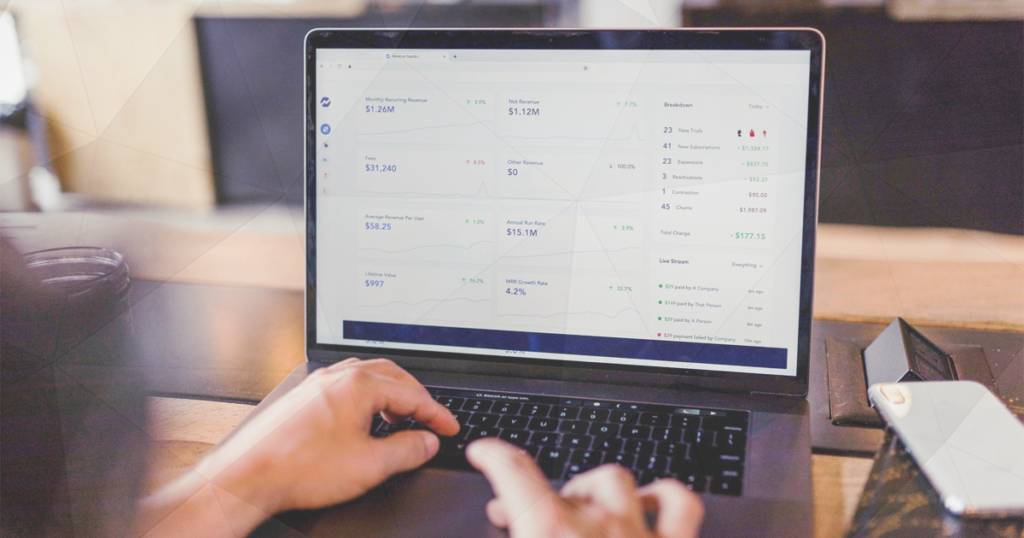Revealed: 12 Struggles New Traders Face (And How to Overcome Them)

Trading mistakes make the path to becoming a successful trader more difficult. New traders often face problems and struggles in their early trading career and get easily discouraged if things don’t go as planned.
Statistics show that 95% of new traders burn their first account in less than six months as they start trading without proper risk management tools and robust trading strategies. Hard fact – most of them don’t make it to the fourth year of trading.
That’s why we’ll talk about the 12 most common trading problems and what new traders can do to overcome them. Because as Kenny Rogers’ song “The Gambler” says,
- Learn more, take our premium course: Trading for Beginners
#1 Trading based on emotions
Your trading psychology and your ability to control emotions will determine the fate of your trading career.
Some traders, no matter how smart they are, can’t deal with the stress of day trading (the most common way that new traders approach trading) and fall into the trap of emotional decision making. There is nothing more dangerous to your bottom line than making erratic decisions based on fear, disappointment, rage, excessive optimism, or greed.
The best way to maintain your psychology under control is to follow your trading plan. Always remember the reasons and research that made you take that trading decision. Keeping a trading journal is also an effective way to deal with emotional trading. All trading plans should have entry and exit points and an emergency door in case something goes wrong and you need to protect your capital.
A trading plan will help you maintain calm and between the numbers of your initial reasoning. Of course, everything can change overnight and the market may start to react to a different catalyst, but even then, you should follow and honor your trading plan.
#2 Overtrading
One of the most common trading mistakes among new traders is, without doubt, overtrading.
Some traders watch 20 charts, 10 different pairs, and make 100 trades per day. They believe in quantity instead of quality, while in reality, this should be the other way around.
Trading is like an extreme sport, it will require all of your energy, focus, and abilities, and sometimes you will have to go the extra mile and push yourself to 120%. And as in sports, resting is an essential prerequisite of successful trading.
Take breaks!
Don’t trade more than the market allows. Never chase the market for trading opportunities and don’t feel angry if you miss a five-star trade. There will be more of them tomorrow, I promise.
Set your trading rules and make sure that your break and your resting times are included. Be patient, wait for your moment, and seize your opportunity.
Take a Read: 15 Eye Opening Day Trading Statistics
#3 Feeling overwhelmed by the excessive amount of data
We live and trade in a world where data travels with the speed of light and information is available everywhere. It is useful if you love keeping yourself informed; however, it is another of the most common trading problems as too much information is also counterproductive.
The more you look to learn, the more you will see how much else is to learn. So, instead of knowing small pieces of everything, try to become an expert in a particular field.
Focus on one thing.
You can try many strategies in your demo account, but all of that should provide you with a single or just a few strategies to work with. Then, become a master of that set of rules.
You don’t need to know everything in investments, but you should know what you are doing. With time, you will naturally feel the necessity of expanding your limits and broadening your current knowledge.
#4 Learn how to manage risk
Risk management is one of the most relevant topics you should understand when trading the global financial markets. Unfortunately, beginners in trading usually completely neglect the basics of risk management at first, until they learn the importance of risk management the hard way – by blowing their account.
Keeping risk low or balanced doesn’t mean that you shouldn’t use leverage at all, but to trade in line with your trading strategy and according to the money you have in your account. Before placing a trade, calculate your risk-per-trade and reward-to-risk ratios of that trade and make sure they’re aligned with your trading plan.
Use a fixed percentage of your trading account as a risk-per-trade measure – most of the time risking around 2% of your funds on any single trade will work just fine. Regarding reward-to-risk ratios, make sure that you’re risking less than your possible profits.
Risk management is crucial for trading success. It should be an integral and thought-out part of any trading plan.
#5 Use stop-losses. Always
Imagine this:
You did your homework and identified a high-probability trading setup. Full of enthusiasm, you open your position at the right time and it starts to develop just as anticipated. But suddenly, the market reverses and your golden trade starts to become a bitter fruit.
Your unrealised profits start to fall and not only is your position at stake, buy your entire account. This could have been easily avoided by using a simple stop-loss order to limit your losses and protect your capital.
A stop-loss order works like a lifeguard for your account. It’s a free insurance policy. Stop-losses need to be used in all of your trades and should be placed based on important technical levels, such as recent support and resistance zones.
This is one of the most effective ways to limit your trading risk and to stay in the game in the months and years to come. Stop-loss orders prevent you from having more losses than you can afford.
Or as the popular saying goes:
#6 Having a series of home runs? Don’t feel overconfident
A 14-year study conducted by the University of California and Peking University found that 75% of all investors quit after two years, and 90% of individual traders are gone after four years. A large portion of those numbers can be attributed to overconfidence after a series of winning trades.
The research found that people started their trading career in a very responsible manner. However, after following their trading plan and enjoying profitable periods of trading, they became overconfident and engaged in overtrading with excessive risk-taking. So, they got burned.
Overconfidence is a sweet poison that can kill your trading career. That’s the reason why you should pay attention and never rest on your laurels.
The best way to avoid overconfidence is to develop a routine and always comply with your own set of trading rules. In addition, keeping a trading journal can help you assess whether your trades are aligned with your trading plan or not.
#7 Following market gurus instead of doing your homework
Having no trading experience, new traders often fall into the trap of scammers and their get-rich-quick schemes. There is no holy grail in trading – it takes patience, discipline, and experience to make it in this job.
Unfortunately, some brokers can also be fraudulent, offering extremely high leverage and pushing you to take significant risks in order to take the other side of your trade. Your losses are their profits, and vice-versa.
The best way to avoid this is to stick to the large players in the industry.
- Are they well known and do they have positive reviews on the internet?
- What about their regulation – are they regulated by a trustworthy regulatory authority?
#8 Adding too many technical indicators to a chart
Traders, usually when just starting out, get to know many types of indicators such as Bollinger Bands, MAs, ATR, MACD, RSI, and others. A common beginners’ mistake is to apply a bunch of indicators to a chart without actually knowing how they’re calculated or how to interpret their values.
The important thing is not to overcomplicate your trading system. This can lead towards something called analysis or indicator paralysis and contrary to what you were trying to achieve, it only worsens your trading. Before using an indicator, it is crucial to understand how it works and what it actually indicates. Most beginners don’t understand that indicators essentially interpret the price action in a different, supposedly easier to understand, way.
Therefore, if you understand what the price action movements are indicating, it is possible to get a much clearer picture without using any indicator at all. This trading approach is often called “naked” or “price-action” trading as the only thing you need is the naked chart and basic technical tools.
Additionally, it’s important is to understand that different market conditions may require different indicators. The two main types of indicators are trend-following and momentum indicators, and applying only one from each group is usually more than sufficient.
- Learn more, take our free course: How to Use Technical Indicators
#9 Trading against the trend
You’ve probably heard the saying “The trend is your friend”. Especially beginners can benefit a lot from trading in the direction of the trend as trends can be quite persistent in the markets.
However, once a new trader becomes too comfortable with his newly-acquired trading skills, that’s when the mistake usually happens. He or she starts to look for quick trades against the overall trend in anticipation that they can short the exact top of a bull market or the bottom of a bear market.
Catching the peaks and troughs of bull and bear runs is very difficult, and can be dangerous even for experienced traders. Instead of buying low and selling high, successful traders often buy high and sell higher, or sell low and buy lower.
Following the crowd and riding the waves of a trend is much more effective than trying to take advantage of small ripples during counter-trend moves.
#10 Fundamentals – The neglected essentials
Despite what technical pundits claim, fundamentals play an extremely important role in price moves. Important support and resistance levels get often broken when fundamentals change and trends can reverse when macro-economic numbers take a 180-degree turn.
Research the fundamentals of financial instruments that you usually trade in order to better understand price-movements.
If the fundamentals say the price should be going down, don’t enter a long position even if technicals show a perfect technical setup. Technical analysis should be used to fine-tune your entry, while the direction of a trade should have fundamental reasoning.
Don’t get me wrong – many successful traders use technical analysis in their trading, but it’s not their only or primary tool in making trading decisions. Without technicals, we wouldn’t be able to get exact entry and exit points, spot important support or resistance levels or determine the strength of a trend.
#11 Trading around important market releases
Trading the news, especially important ones such as the non-farm payroll (NFP), can be exciting as it produces large volatility in the market. However, bear in mind that news trading is highly risky and speculative.
Predicting where the price will move after important reports are announced is quite difficult as the price may often decide to move in both ways, taking out stops of both long and short positions. Afterward, the price usually returns to where it was trading before the news was released.
Important market releases often lead to wider spreads and increased slippage, which in turn eats into your potential profits. This is especially true for short-term traders who use tight stop-losses.
#12 Not keeping a trading journal and learning from past trades
The objective of a trading journal is to track your trades, performance, and decisions over time. It allows you to reflect on the previous trades and evaluate the trading methodology that has been used. Most of the time, the reason for poor trading performance isn’t the trading system itself, but the inability of a trader to stick to the rules of that system.
A trading journal can help you to identify times when you didn’t stick to your trading plan and how it impacted your trading results.
A simple trading journal includes the time and date of a trade, the entry and exit points, direction, traded security, and reasons for taking the trade. Once you close the position, enter the results of the trade. Create a simple trading journal and save it on your desktop or on a cloud service.
Perform regular retrospectives of the journal once a week or month and look for any common trading patterns that resulted in losing trades.
Final Words
Trading is both science and art. It’s a science because you need to follow certain rules to make it to the top. It’s art because markets keep changing, and rules that worked yesterday don’t have to work tomorrow.
Emotional control, sticking to trading plans, efficiently managing risks, and becoming an expert in a specific strategy are necessary steps in becoming a successful and profitable trader.
Always keep learning, test yourself, believe in your skills, and avoid the traps of overconfidence and overtrading in order to stay in the game for many years to come.
- Start your trading career, take our premium course: Trading for Beginners





